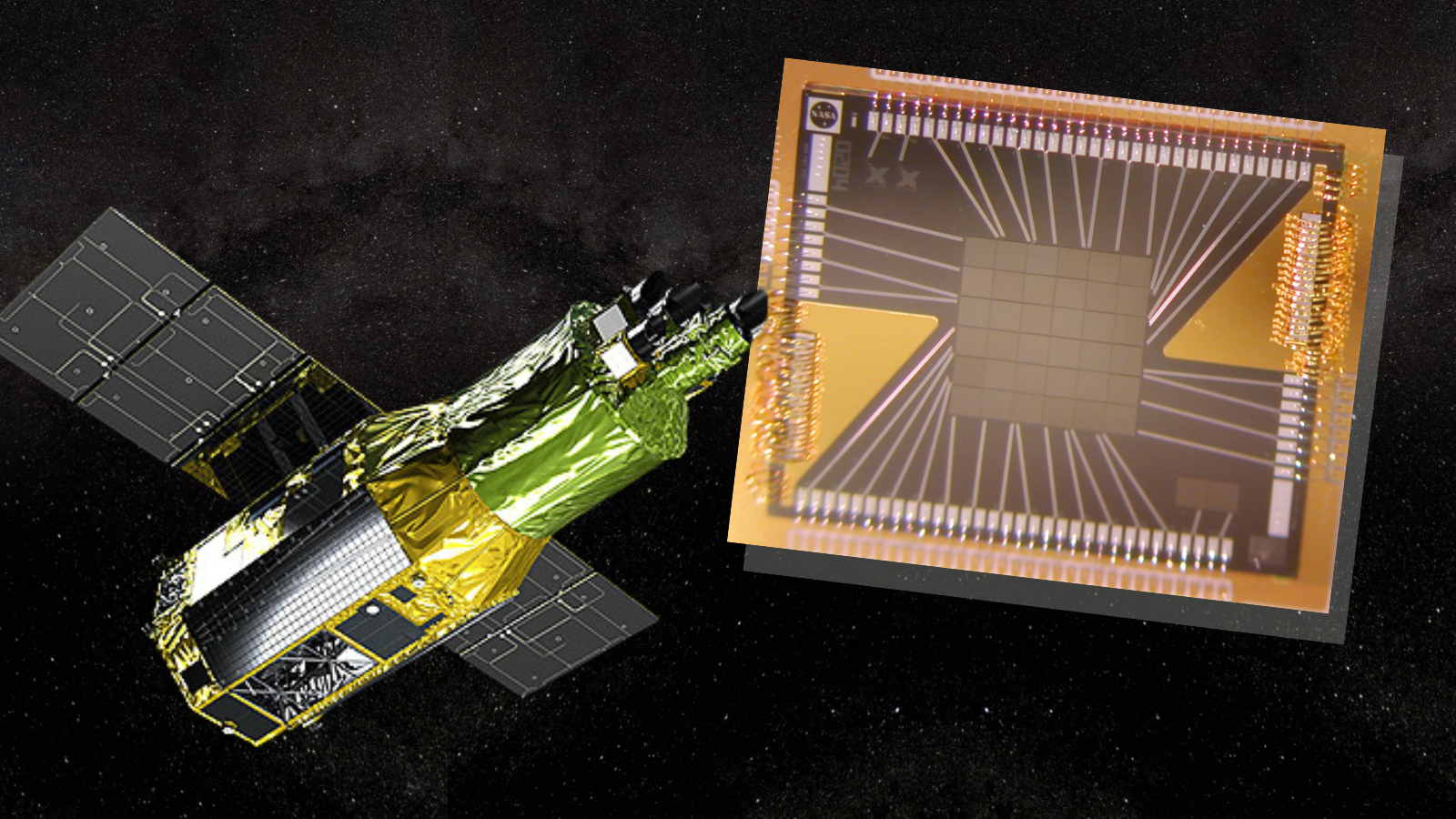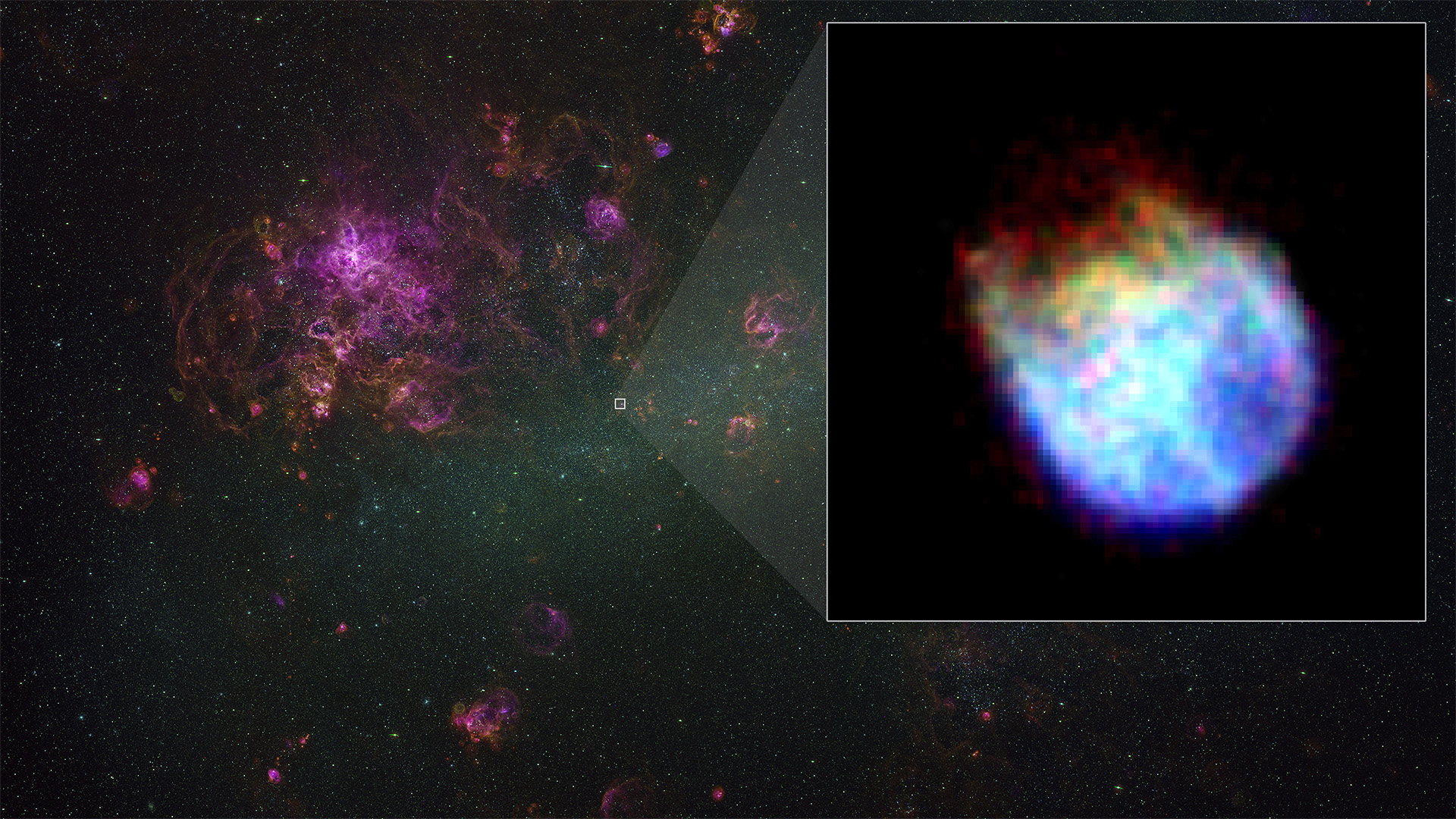
A new X-ray space telescope is broadening our understanding of the universe with just three dozen pixels — really putting smartphones with as many as 12 million to 48 million pixels to shame!
The Japan Aerospace Exploration Agency (JAXA) and NASA spacecraft known as the X-ray Imaging and Spectroscopy Mission (XRISM; pronounced "crism") launched in Sept. 2023. Its mission is to study the universe in "soft X-rays," referring to electromagnetic radiation with energies around 5,000 times greater than that of visible light. The way XRISM works has to do with an instrument called "Resolve."
The really stunning thing about Resolve is it allows XRISM to widen humanity's celestial understanding with a fraction of the pixels used by the screen of the original Nintendo Gameboy, released in 1989. With Resolve in hand, the ultimate aim of the XRISM mission is to allow scientists to discover more about some of the hottest regions of the cosmos, as well as some of the largest structures in the universe and the feeding supermassive black holes that sit in the active hearts of many galaxies.
Related: Hubble Space Telescope pauses science due to gyroscope issue
"That may sound impossible, but it’s actually true," Richard Kelley, the U.S. principal investigator for XRISM at NASA's Goddard Space Flight Center in Greenbelt, Maryland, said in a statement. "The Resolve instrument gives us a deeper look at the makeup and motion of X-ray-emitting objects using technology invented and refined at Goddard over the past several decades."
A space mission with plenty of Resolve
To be fair, it might be inappropriate to compare Resolve to a smartphone camera.
The 6-by-6-pixel microcalorimeter array, which measures just 0.2 inches by 0.2 inches (0.5 centimeters by 0.5 centimeters), makes Resolve way more than a camera.
"Its detector takes the temperature of each X-ray that strikes it," Brian Williams, NASA's XRISM project scientist, explained in a statement. "We call Resolve a microcalorimeter spectrometer because each of its 36 pixels is measuring tiny amounts of heat delivered by each incoming X-ray, allowing us to see the chemical fingerprints of elements making up the sources in unprecedented detail."

To produce a spectrum of X-ray sources between 400 and 12,000 electron volts, the entire Resolve detection has to be kept extremely cold at a temperature of minus 459.58 degrees Fahrenheit (minus 273.1 degrees Celsius). That is a fraction of a degree warmer than absolute zero, the theoretical temperature at which all atomic movement would cease.
Resolve is so precise that it can detect a target celestial object's motion, giving astronomers a 3D view of that target. For galaxies, this means the motions of hotter gas glowing at higher energies can be distinguished from that of colder gas.
These X-ray maps should allow scientists to track the motion of matter blasted out by stars dying explosive supernova deaths — a pretty big deal for a little device with just 36 pixels.







